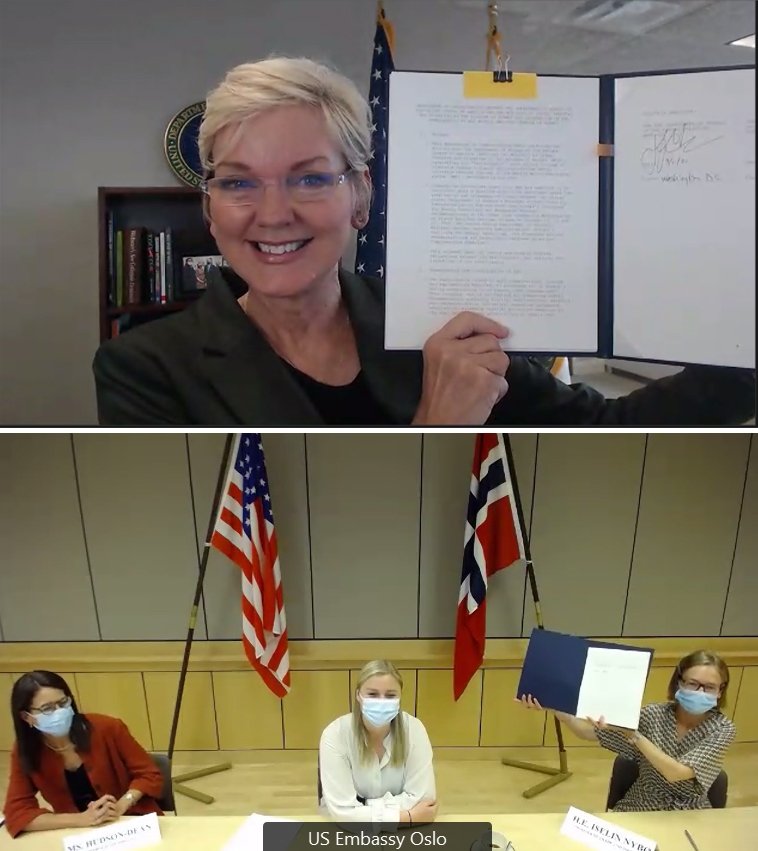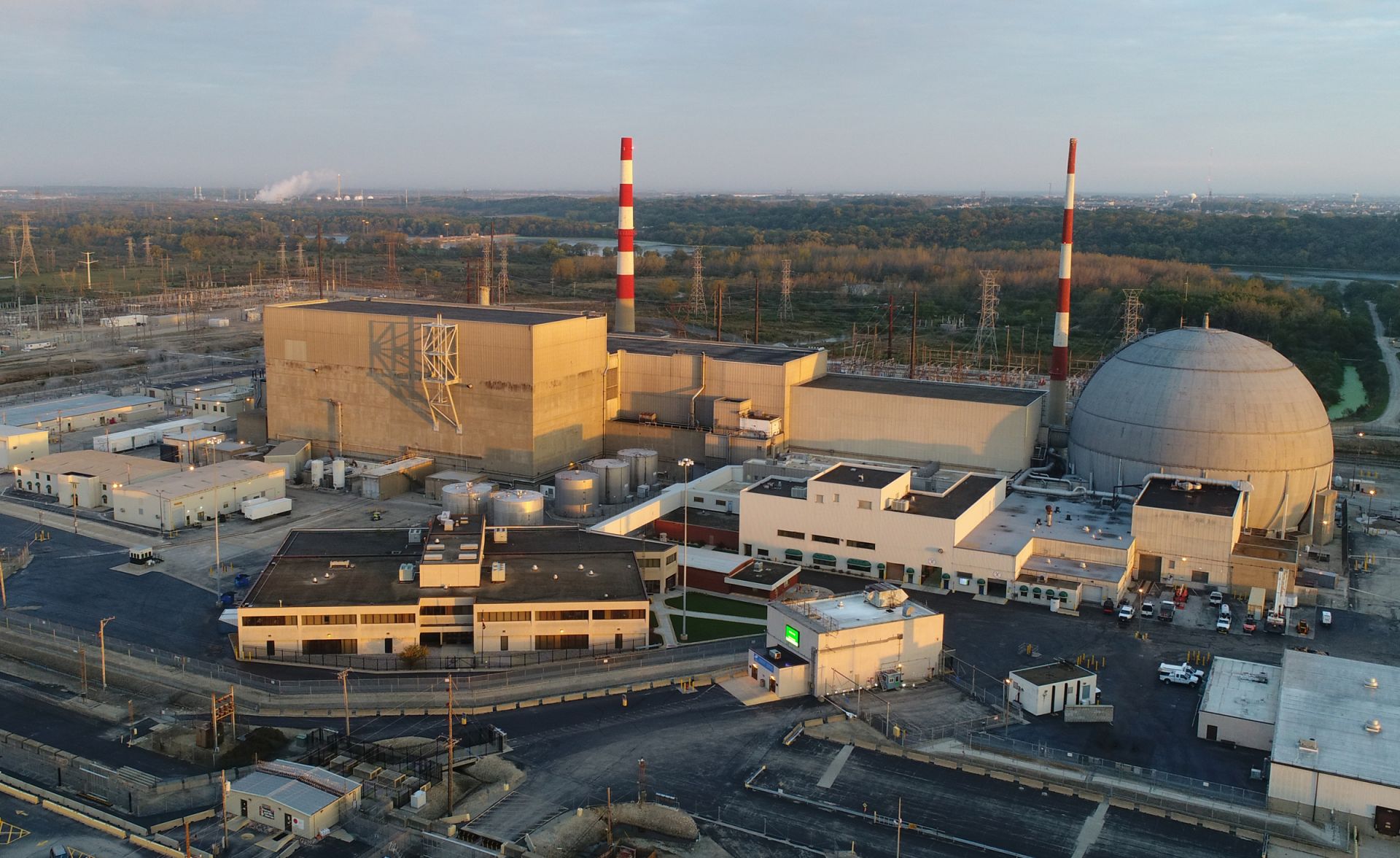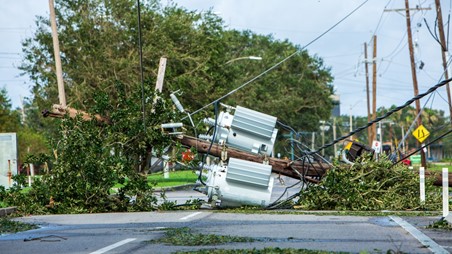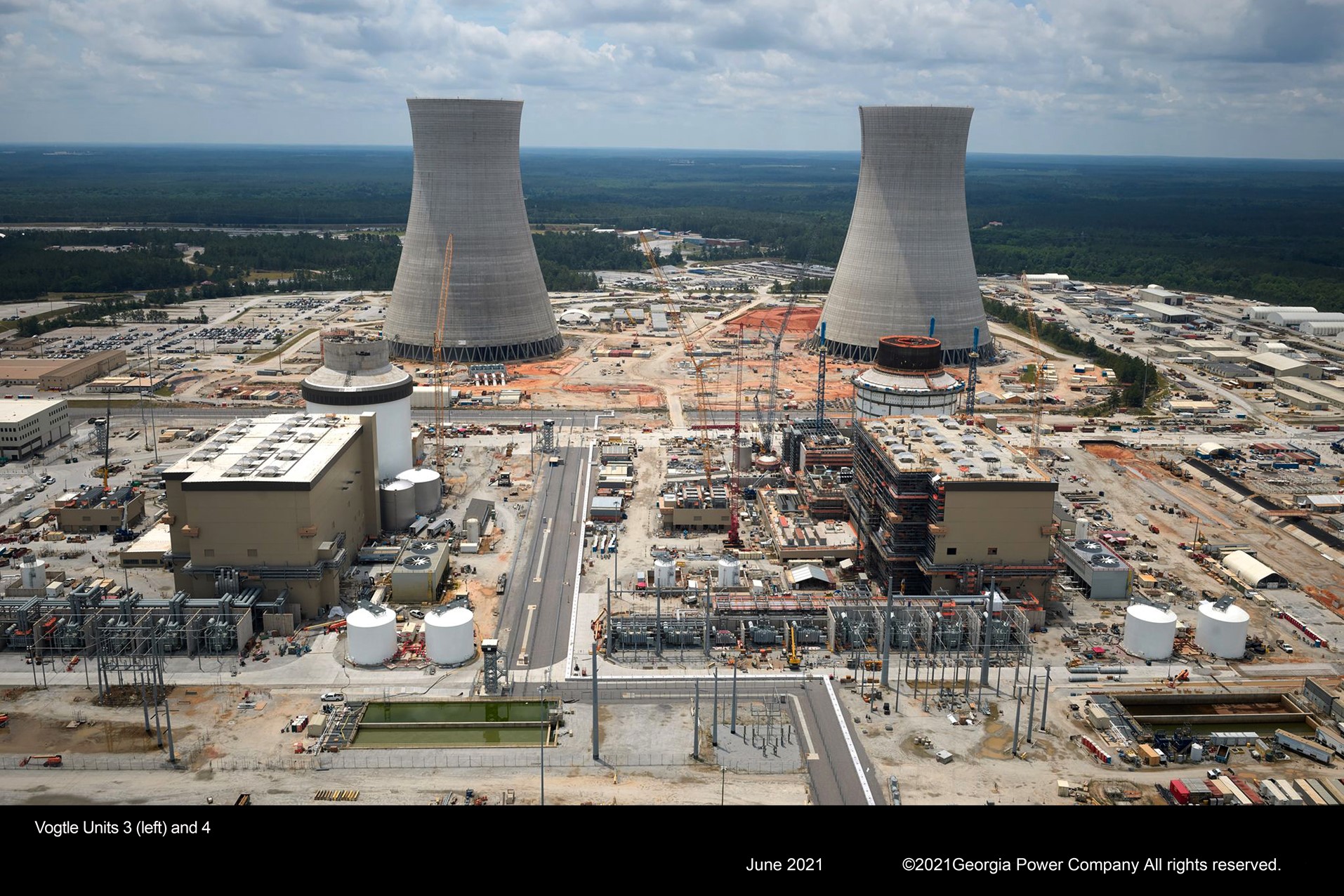During the week-long mission, the IAEA team is carrying out practical NDT training with specialized equipment. (Photo: Abel Domato/BAC)
In the aftermath of a devastating explosion in the port of Beirut, Lebanon, in August 2020, an International Atomic Energy Agency team visited the country at the government’s request and found no evidence of artificial radionuclides and no increase in radiation levels. The powerful blast, which was caused by an explosion of improperly stored ammonium nitrate, killed more than 200 people and leveled numerous buildings while leaving other buildings standing with possible structural damage. The IAEA recently announced that a different team of experts has traveled to Lebanon with a new mission: to assist the nation in the use of non-destructive testing (NDT) to check the structural soundness of buildings that were impacted by the explosion.
Energy Harbor’s Beaver Valley nuclear plant in Shippingport, Pa.
In an action that could make Pennsylvania’s nuclear plants more cost-competitive in power markets, the state’s Independent Regulatory Review Commission has approved a regulation that would allow Pennsylvania to join the Regional Greenhouse Gas Initiative (RGGI), a cooperative effort of Northeastern and Mid-Atlantic states designed to cap and reduce carbon emissions from fossil fuel–fired power plants.
A NuScale representative conducts training on the nuclear power plant control room simulator for students and faculty at CAES. (Photo: CAES)
The Center for Advanced Energy Studies (CAES) has announced the opening of the Small Modular Reactor Simulator Laboratory, featuring NuScale Power’s Energy Exploration Center, at its headquarters in Idaho Falls, Idaho. The new lab will increase CAES’s capabilities to train future scientists, engineers, and members of the energy workforce and will be used to educate the public about nuclear energy and reactor technology, according to an August 31 CAES press release.
The Dresden nuclear power plant
With essentially no time to spare, the Illinois Senate early this morning passed a clean energy omnibus package that includes $694 million in assistance to three of the state’s financially troubled nuclear plants: Braidwood, Byron, and Dresden. The vote was 39–16. (Both the Senate and House had returned to the capital on Tuesday for a one-day special session to consider legislative redistricting.)
Hurricane Ida knocked out all transmission lines into New Orleans, leaving more than a million people without power. (Photo: Entergy)
The Nuclear Regulatory Commission said it was monitoring events at three nuclear power reactors in Louisiana and Mississippi after Hurricane Ida made landfall on August 29. With winds of 150 miles per hour, the Category 4 storm left more than 1 million people without power in the two states. Ida has since weakened to a tropical storm.
Taken from above, this photo of the subassembly tool shows the complex system of alignment units used to slowly swing two toroidal field coils (bottom left and right) into position around the vacuum vessel sector. In the background, poloidal field coil #5 sits on the floor of the Assembly Hall, awaiting installation in the assembly pit in mid-September. (Photo: ITER)
Inside the ITER Assembly Hall, aided by a 20-meter-tall sector subassembly tool known as SSAT-2, the first of nine 40-degree wedge-shaped subassemblies that will make up the device’s tokamak is taking shape. On August 30, the ITER Organization announced that all the components of the first subassembly were in place on the SSAT-2. After the wings of the subassembly tool slowly close, locking two vertical coils in place around the outside of a vacuum vessel section that is already wrapped in thermal shielding, the completed subassembly will be ready for positioning in the ITER assembly pit in late October.
The North Anna nuclear power plant. Photo: Dominion Energy
The Nuclear Regulatory Commission’s draft environmental impact statement on Dominion Energy’s application for a subsequent license renewal (SLR) for North Anna’s nuclear units is now open for public comment.
Vogtle-3 (left) and -4 in June. (Photo: Georgia Power)
Oversight of the Vogtle nuclear new-build project will be increased if the preliminary conclusions in an August 26 Nuclear Regulatory Commission special inspection report are finalized.
Conducted from June 21 to July 2, the inspection looked into the cause and extent of construction-quality issues in the safety-related electrical cable raceway system at Vogtle-3.
Sandia's Brad Beeny (left) and Larry Humphries examine remnants from a series of lower head failure experiments. Results from these and other experiments are used to inform nuclear accident modeling computer code. (Photo: Randy Montoya)
Researchers at Sandia National Laboratories have been expanding MELCOR—the severe accident modeling computer code used by the Nuclear Regulatory Commission to evaluate the safety of light water reactors—to study the small modular reactors and non-light-water advanced reactors that are under development. An article published in Sandia Lab News on August 27 describes in detail how MELCOR is being expanded to work with different reactor geometries, fuel types, and coolant systems.
Bellefonte nuclear power plant (Photo: TVA)
A federal court last week sided with the Tennessee Valley Authority in its legal dispute with Nuclear Development LLC over the proposed sale of the unfinished Bellefonte nuclear power plant. The court, however, also ordered the utility to refund millions to Nuclear Development over the aborted transaction.
The UAE’s Barakah-2 (Photo: FANR)
The Emirates Nuclear Energy Corporation has announced the startup of Unit 2 at the Barakah nuclear power plant, located in the Al Dhafra region of Abu Dhabi, the United Arab Emirates’ capital city.
The milestone, ENEC noted in its August 27 announcement, was achieved approximately one year after the startup of the plant’s Unit 1 reactor and within five months of Unit 1’s entering commercial operation.
NorthStar’s RadioGenix system produces the medical radioisope Mo-99 without the use of uranium. (Photo: NorthStar)
NorthStar Medical Technologies of Beloit, Wis., will receive $37 million under two cooperative agreements with the National Nuclear Security Administration for the production of molybdenum-99 without the use of high-enriched uranium. Considered a critical medical radioisotope, Mo-99 is used in more than 40,000 medical procedures in the United States each day, including the diagnosis of heart disease and cancer.
Engie Electrabel’s four-unit Doel nuclear plant, in East Flanders, Belgium. Units 1, 2, and 4 are to be closed in 2025; Unit 3 is to be shuttered in 2022. (Photo: Torsade de Pointes)
A pronuclear think tank in Belgium has written a letter to the country’s prime minister, Alexander De Croo, urging him to reevaluate the government’s plan to phase out nuclear power generation by 2025 and replace it with gas power.












 and -4.jpg)




 The U.K. government last week announced the release of its
The U.K. government last week announced the release of its 

